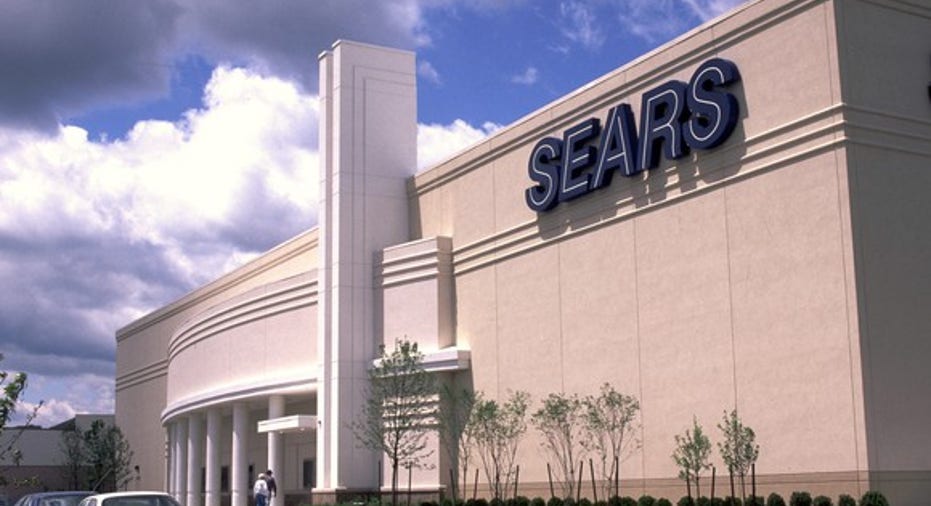Here's Why Sears Holdings Finally Admitted the End May Be Near

"Always look on the bright side of life" and "stay optimistic" make for nice T-shirt or greeting card sentiments, but the Securities and Exchange Commission (SEC) has rules that prevent public companies from letting optimism cloud their financial reporting.
It was because of those regulations that Sears Holdings(NASDAQ: SHLD), the parent company of Sears and Kmart, had to make what's known as a "going concern" disclosure in its recent annual report. That's an official statement that the company believes it may not survive the coming year.
Public companies report results based on standards adopted by the Financial Accounting Standards Board (FASB). The FASB, a private organization, does not make rules or laws. The SEC, however, has the right to establish financial reporting standards and it has chosen to designate the ones created by the FASB as de facto law. According to PwC, a going concern [opens in PDF] disclosure must be made by a public company "when conditions give rise to substantial doubt about a company's ability to continue as a going concern within one year from the financial statement issuance date."
Sears, which had delivered an optimistic report on its revival efforts in mid-February, has seen its financial situation deteriorate to the point it had to issue what amounts to an official warning it may run out of money. In that March 21 SEC filing, the company acknowledged that its "historical operating results indicate substantial doubt exists related to the company's ability to continue as a going concern." While expressing optimism that the plans it has in the works could provide the money it needs, the chain also acknowledged that if it continues to experience operating losses (and there are very few reasons to expect it won't) and it can't sell off or leverage assets as planned, that it may not be able to secure funds needed to operate.
It's important to note that issuing a going concern notice does not guarantee a company will go out of business. Sears Holdings does have assets and real estate that could potentially generate the billions it needs to fund its losses and transformation, but this disclosure admits something Sears would rather not have to say publicly -- that its plans may not work and they are fairly tenuous in the first place.
Sears has admitted it may run out of cash. Image source: Sears.
Why keep bad news quiet?
In general, struggling companies want to keep the extent of their problems quiet. If it's well known that a chain may not survive, it can become a self-fulfilling prophecy. People may stop shopping there either because they are wary about being able to return merchandise or because they assume they will soon get better prices at a going-out-of-business sale. Shoppers may also stop buying gift cards, which essentially takes an interest-free loan away from the retailer.
The most serious consequence of having to publicly admit a retail chain may not survive is that vendors may no longer offer credit or favorable payment terms because they believe they won't get paid in full if the company goes bankrupt. When that happens, a retailer must pay up front for any goods or merchandise it receives. That can be a death blow, especially heading into the fourth quarter, where chains stock up on merchandise with the anticipation of paying for it by selling it during the busy holiday season.
What's next for Sears Holdings?
The chain and its CEO, Eddie Lampert, have gone to great pains to convince shareholders, vendors, and consumers that it has a viable plan to turn its business around. The company has over $13 billion in short- and long-term liabilities and it lost $607 million in 2016. That's up from $580 million the year before. In addition, Sears Holdings stores had a 10.3% drop in comparable-store sales in 2016 while overall revenue dropped by $1.2 billion.
Lampert, in the company's February update on "the next phase of its strategic transformation," made every effort to make it seem like good things were happening. In some ways, even though the company saw its share price jump after the report was released, the CEO's statement was a bit like talking about how nice your lawn looks while your house is burning down behind you.
"We significantly improved our operating performance and made progress toward profitability in the fourth quarter of 2016," he said. "In the first several weeks of 2017, we undertook a series of transactions to optimize our capital structure and unlock value across our wide range of assets. We also reached an agreement to amend our asset-based credit facility which further enhances our liquidity and financial flexibility."
That's certainly the glass half-full view while the going concern statement offers the glass half-empty view. Sears is not dead yet, but it's really sick and there are strong signs it may not pull through.
10 stocks we like better than Sears HoldingsWhen investing geniuses David and Tom Gardner have a stock tip, it can pay to listen. After all, the newsletter they have run for over a decade, Motley Fool Stock Advisor, has tripled the market.*
David and Tom just revealed what they believe are the 10 best stocks for investors to buy right now... and Sears Holdings wasn't one of them! That's right -- they think these 10 stocks are even better buys.
Click here to learn about these picks!
*Stock Advisor returns as of February 6, 2017
Daniel Kline has no position in any stocks mentioned. The Motley Fool has no position in any of the stocks mentioned. The Motley Fool has a disclosure policy.



















